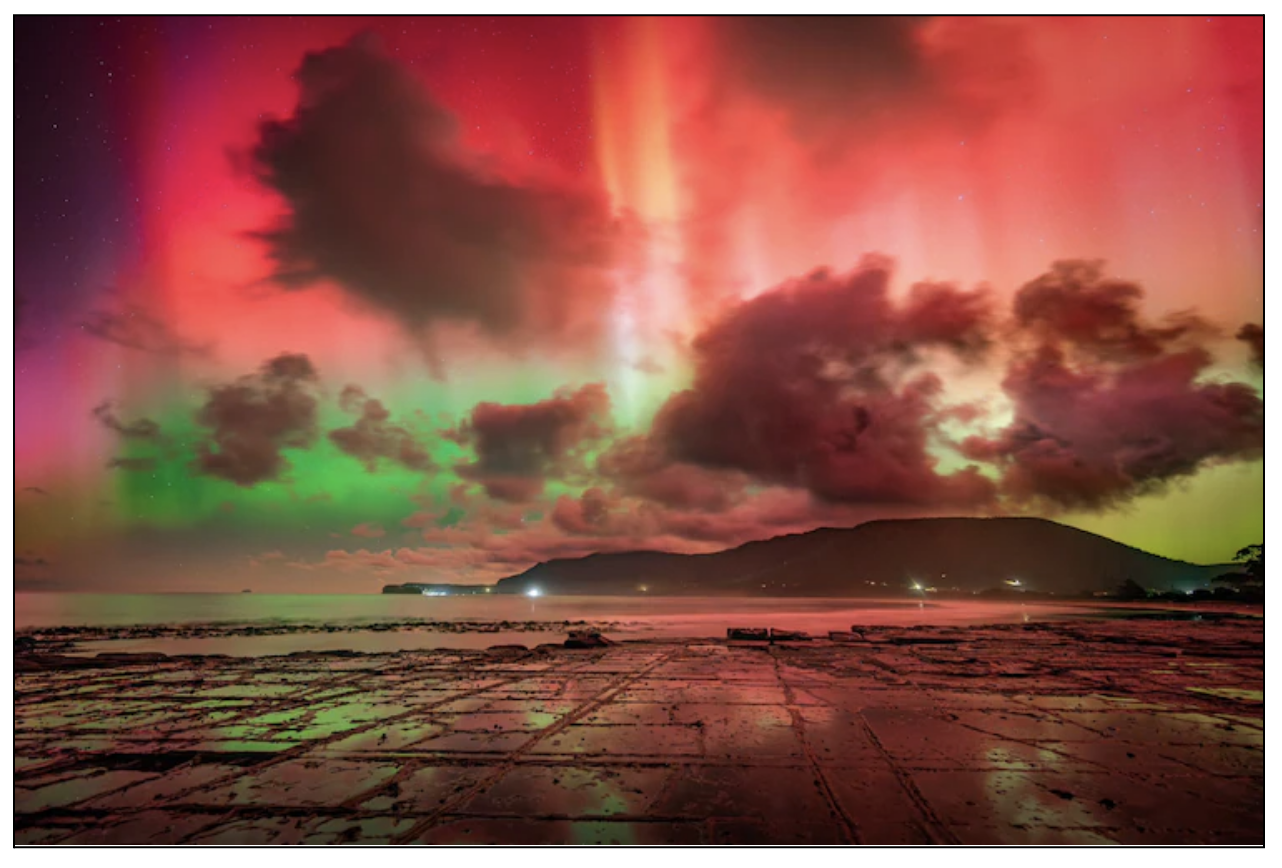News Excerpt:
An exceptionally powerful solar storm struck Earth on May 10th, dazzling displays of northern lights and auroras illuminated the night sky in several countries, causing disruptions to power and communications.

More About the News: The National Oceanic and Atmospheric Administration issued a rare severe geomagnetic storm warning when a solar outburst reached Earth on Friday afternoon, effects of which are expected to last over the weekend and even next week.
What is Northern Lights:
- The occurrence of a severe solar storm is the result of a complex interplay of processes on the sun's surface. As nuclear reactions take place within the sun, it regularly releases material into space in the form of solar flares and coronal mass ejections (CMEs).
- These events can be triggered by disturbances in the sun's magnetic field or by the buildup of energy in certain regions of the solar atmosphere. At any given moment, the sun emits charged particles from its corona, creating the solar wind.
- When this wind interacts with Earth's ionosphere, the aurora is born. In the Northern Hemisphere, it's called the northern lights (aurora borealis), while in the Southern Hemisphere, it's known as the southern lights (aurora australis).
- These charged particles are directed towards Earth's poles by our planet's magnetic field, causing the atmosphere to fluoresce.
Aurora Composition:
- The vibrant colors of the auroras are dictated by the chemical composition of Earth's atmosphere. Each type of atom or molecule emits its own unique set of colors when absorbing and radiating energy. For instance, nitrogen molecules produce red hues, while oxygen molecules create green ones.
- Insights from Auroras: Auroras provide valuable insights into Earth's upper atmosphere, including details about its density, composition, flow speeds, and electrical currents. These observations offer valuable information about Earth's magnetic field and its dynamic interactions with space.
- Auroras on Other Planets: Auroras are not unique to Earth; they can be found on other planets with magnetic fields and atmospheres, although they vary compared to Earth's auroras.
Solar Cycle Influence:
- The intensity and frequency of auroras are influenced by the solar cycle, which spans roughly 11 years. During periods of heightened solar activity, such as solar maximum, auroras are brighter and more frequent. We are currently approaching solar maximum, predicted to peak between early 2024 and late 2025.
Unique Aurora Hybrid STEVE:
- In addition to traditional auroras, there's another atmospheric phenomenon called STEVE ("Strong Thermal Emission Velocity Enhancement"). STEVE appears as a distinct purple arc with a green picket-fence structure, visible from lower latitudes than traditional auroras. It's a unique type of aurora hybrid driven by heating of charged particles and electron interactions in the upper atmosphere.
Impact of Solar Outburst:
- When a solar outburst, such as a CME, reaches Earth, it can have significant impacts on our planet's space environment and technological infrastructure. The emissions from the sun, consisting of charged particles and intense radiation, interact with Earth's magnetic field and upper atmosphere.
- This interaction can lead to disturbances in the ionosphere, affecting communication and navigation systems that rely on radio waves. Satellites orbiting close to Earth are particularly vulnerable to the effects of solar storms, as the charged particles can interfere with their electronics and communications systems.
- Additionally, the influx of charged particles can induce electrical currents in power grids, potentially leading to power outages and disruptions in electrical systems on the ground.


